Get PeakVisor App
Sign In
Search by GPS coordinates
- Latitude
- ° ' ''
- Longitude
- ° ' ''
- Units of Length

Yes
Cancel
Share ×

Scan the QR code and open PeakVisor on your phone
❤ Wishlist ×
Choose
Delete
In the northernmost portion of India’s west coast is the state of Gujarat, which, with a population of around 64,000,000, is the ninth most populous of India’s 28 states.
Gujarat has long been a notable region, being where many prehistoric fauna have been found, the location of many ancient Indus Valley cities, and existing in part on the historically significant Kathiawar peninsula, where a legacy of trade and commerce has helped make Gujarat the industrious and massive economy that it is today.
Outside of industry and urbanity, however, Gujarat has four national parks and twenty three wildlife sanctuaries devoted to preserving the natural beauty and richness of the area. Likewise, Gujarat is home to about 32 named mountains, with the tallest and most prominent being the Mount Girnar peak of Gorakhnath, standing at 1,110m/3,642ft above sea level with a prominence of 1,091m/3,579ft.
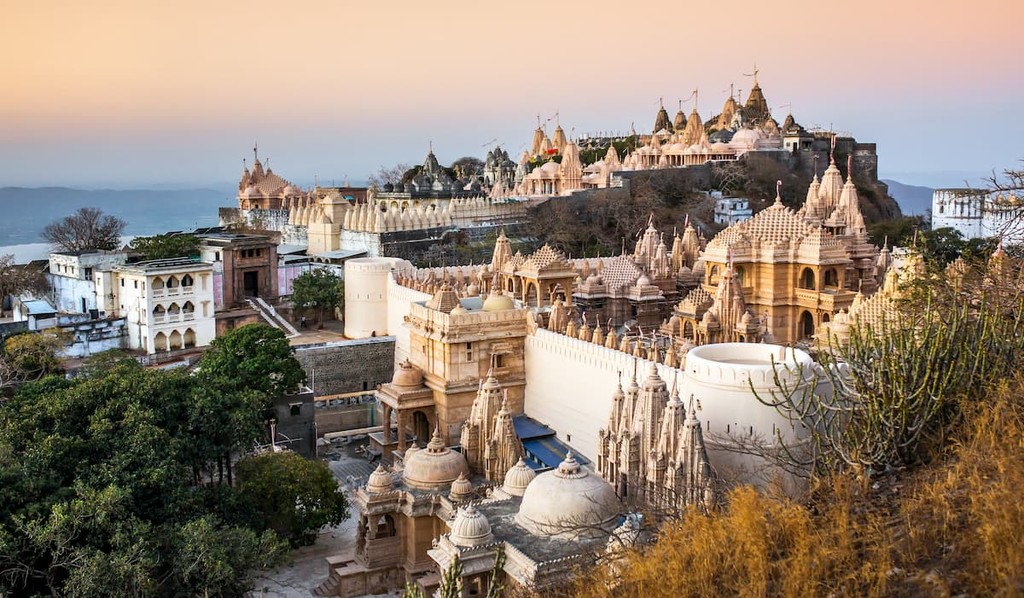
The interesting shape of Gujarat allows it many borders and a wide range of ecosystems within its bounds. The state has 33 districts, the largest of which is Kutch in the northwest, which shares a northern border with the Pakistani districts of Tharparkar, Badin, and Thatta in the province of Sindh. Kutch borders the Gulf of Kutch to the south, separating it from the Kathiawar peninsula, with the Arabian Sea to the west, and Rann of Kutch Lake in the interior.
Otherwise, to the northeast of Gujarat is a long border with the state of Rajasthan, with Madhya Pradesh to the east, Maharashtra to the south, and the Union Territory of Dadra and Nagar Haveli and Daman and Diu taking up a piece of the south border with Maharashtra as well.
On a map, the most prominent feature is perhaps the jutting peninsula of Kathiawar, which is surrounded by the Gulf of Kutch to the north, the Arabian Sea to the south, and the Gulf of Khambhat to the east.
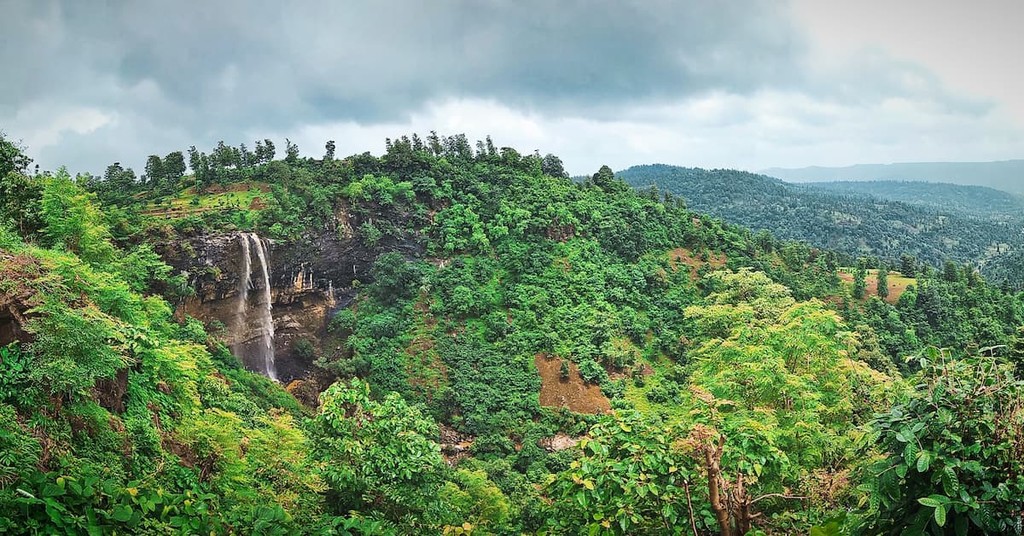
The capital of Gujarat is Gandhinagar, though its largest city is Ahmedabad, both located close to each other in the inland portion of the state.
As for natural features, the Sabarmati, Tapi, and Narmada rivers are some of the most significant in the state. The Sabarmati runs through both Gandhinagar and Ahmedabad, flowing south into the Gulf of Khambhat, while the Narmada enters the gulf from the east, and the Tapi is further south, going through the city of Surat into the Arabian Sea.
The eastern borders of Gujarat are often marked by or in proximity to mountain ranges, such as the Western Ghats, Aravalli, and Vindhya ranges, though they tend to only be the fringes of the mountains. There are also hills and peaks elsewhere in Gujarat, such as Gorakhnath, Chotila Hill, and Girnar, all in Kathiawar or the greater region of Saurashtra that comprises Kathiawar.
Along the border with Pakistan is the Rann of Kutch, an expanse of subtropical salt marshes and grasslands that floods during monsoon season. Gujarat also contains a bit of the Thar Desert in the north, which is bordered by the Rann of Kutch.

The Rann of Kutch is also one of the main terrestrial ecoregions of Gujarat, mostly affecting the district of Kutch. The Kathiawar peninsula and some parts of Kutch are mainly occupied by Northwestern thorn scrub forests, with the Northwestern Ghats moist deciduous forests affecting the Western Ghats areas, and the Kathiar-Gir dry deciduous forests covering large swaths inland and some of Kathiawar.
This variety of ecoregions, of course, results in a variety of climates. Generally, Gujarat has only a winter from November to February, summer from March to May, and a monsoon season from June to October. Winters are typically mild and dry while summers can be dry but rather intense, so heavy rainfall is largely restricted to monsoon season.
Gujarat is home to various geologic formations and oddities. Only several decades ago, the fossils of at least 13 dinosaur species were found in former dinosaur hatcheries in Balasinor, among thousands of fossilized dinosaur eggs.
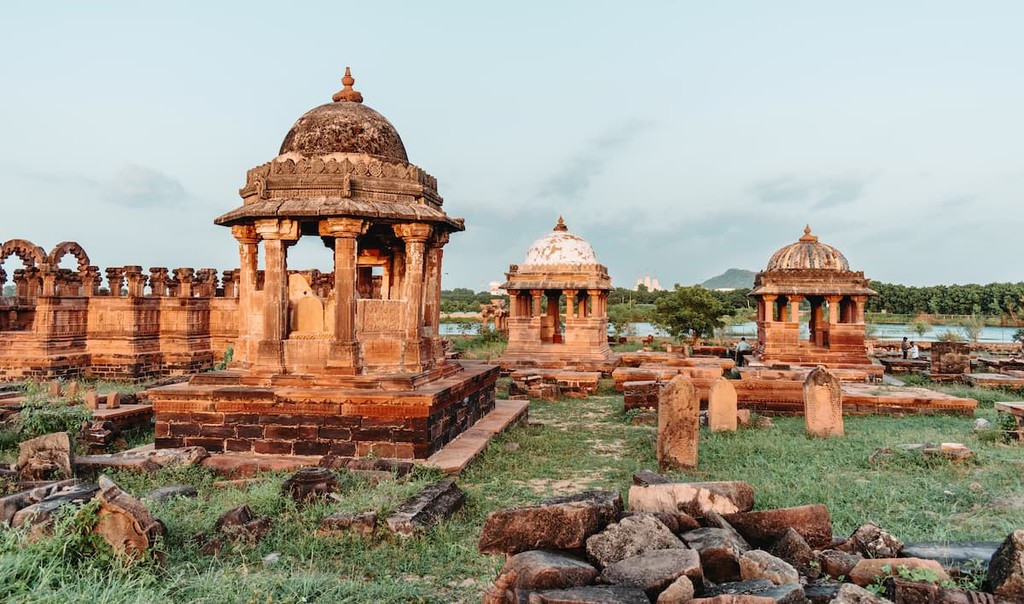
The district of Kutch, as well, has long been known for its many fossil findings, as well as fossil sauropod tracks found in the Bhuj Formation, a Mesozoic formation of sandstone found in western Kutch. Western Kutch is also home to the Chari Formation, a Jurassic formation of limestone, siltstone, sandstone, and oolite, with fossils found among it as well.
A similar story of fossil findings can be seen in the Bathonian formation in central Kutch as well, made up mainly of limestone and marl. In the Rann of Kutch is the Meruda Takkar, a Precambrian inselberg made of syenite. The region also contains the Dhinodhar Hills, a volcanic plug made of aphanitic rock that emerged from the local sandstone.
The Kutch peninsula is also notable for being an active example of fold and thrust tectonism, containing several hill ranges marked by folds from fault propagation. This tectonic activity has made Kutch the site of many extreme earthquakes.
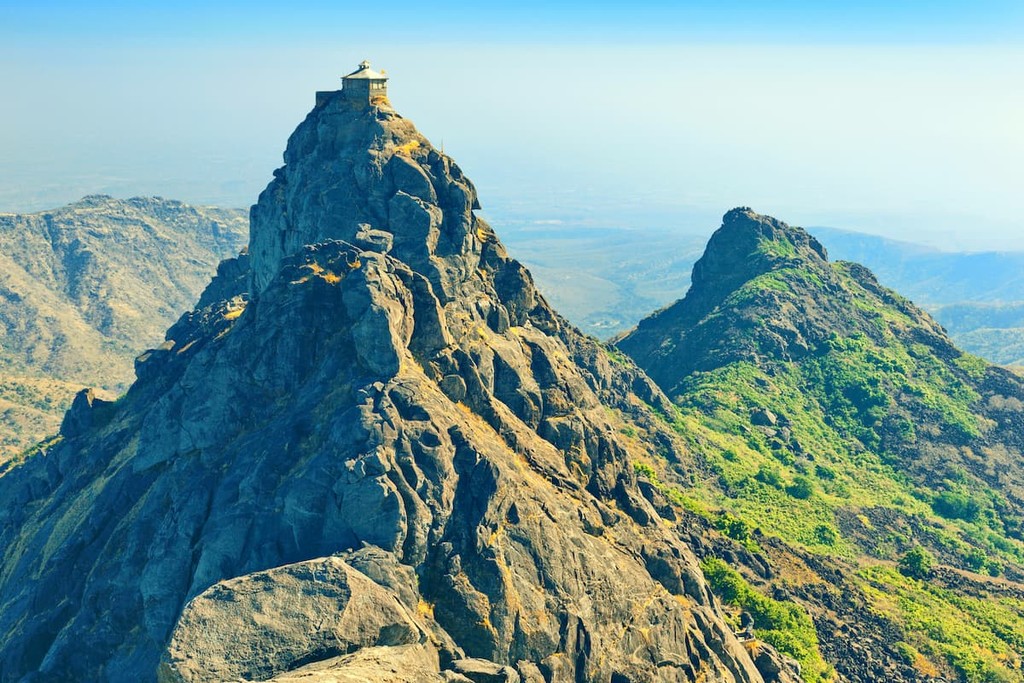
In Saurashtra and Kathiawar, there is a presence of miliolite limestone found in carbonate rocks known as Porbandar stone, named after the port city of Porbandar where the stone would often be shipped.
The peaks of Kathiawar also have interesting geologic makeups. Girnar, for one, is an igneous plutonic complex made of gabbros, diorites, rhyolites, lamprophyres, and alkali-syenites.
As for the main mountain ranges of Gujarat, the Western Ghats consist of the faulted and eroded edge of the Deccan Plateau in western and southern India, likely formed around 150 mya as Gondwana broke apart. The Western Ghats are primarily made of basalt, as well as charnockites, leptynites, khondalites, granite gneiss, metamorphic gneisses, and others.
The Aravalli Range, meanwhile, is similar in that it is the eroded stub of ancient mountains. The range itself came to life during the Aravalli-Delhi Orogen during the Precambrian, and has been worn down over time by intense weathering, no longer growing any higher due to the lack of upward thrust beneath it.
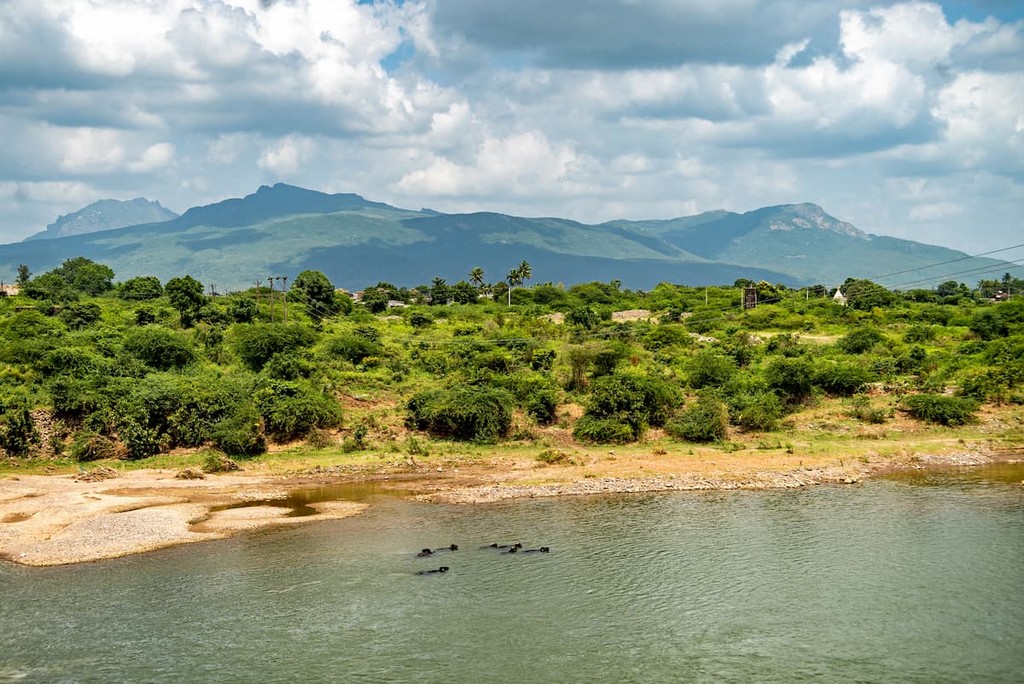
Sequences during the Proterozoic eon have resulted in layers of metasedimentary and metavolcanic rock formed over the Archean Bhilwara Gneissic Complex basement. There is also a heavy fossil and mineral presence, such as copper and other metals, rock phosphate, talc, asbestos, apatite, and many others, though not all such minerals may be found in Gujarat.
The Vindhya Range, which debatably reaches Gujarat depending on one’s opinion of its extent, is one of the biggest examples of sedimentary succession in the world.
The diversity of landscape in Gujarat lends itself to a diversity of ecosystems. One of its most significant features is that of the Rann of Kutch, a grassland and thorny scrub that spends most of the year arid besides monsoon season and hot besides the winter. This ecosystem mainly supports grasses like fountaingrass, apluda, lemongrass, sandbur, or lovegrass, with few trees such as the invasive prosopis juliflora along the bets.
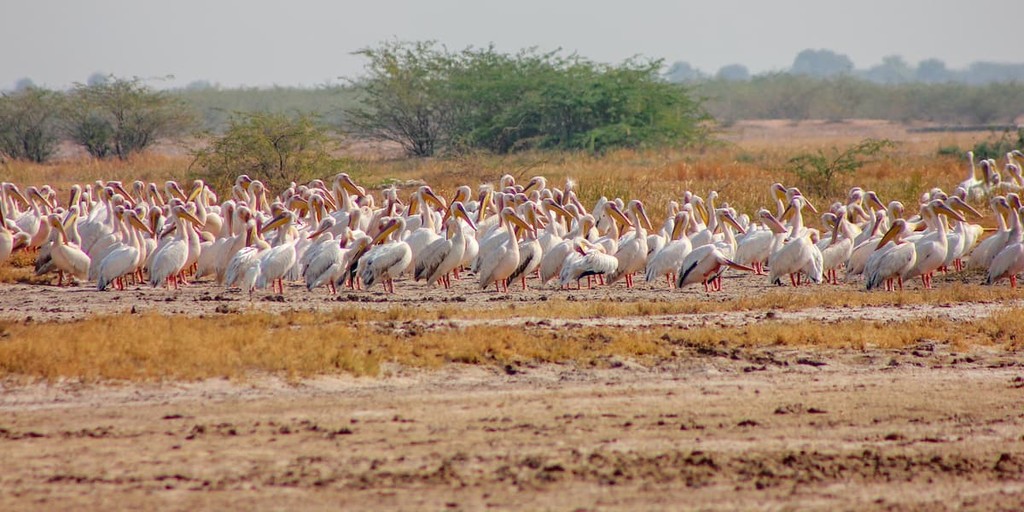
As for fauna, the Rann of Kutch supports a variety of mammals large and small, such as the striped hyena, Indian wild ass, chinkara, blackbuck, desert wildcat, caracal, and nilgai, and around 200 birds, many of which, like the lesser flamingo or demoiselle crane, take shelter in the wetlands during the appropriate season.
In Kiathawar, the Kathiar-Gir dry deciduous forests are typical, and can be best seen alongside various other ecosystems in Gir National Park. In this region, the fauna are some of the main attractions, with large carnivores such as the Asiatic lion, striped hyena, golden jackal, Indian leopard, and many other unique or rare species, as well as unique ungulates like the four-horned antelope, wild boar, chital, nilgai, and sambar.
Indian cobras, mugger crocodiles, monitor lizards, and many birds from scavengers to owls to woodpeckers likewise contribute to the biodiversity of fauna in and around the park. The flora, among which teak, acacia, banyan trees, ziziphus, and endless others can be found, is a mixture of dry deciduous scrub forest and dry savannah forests.
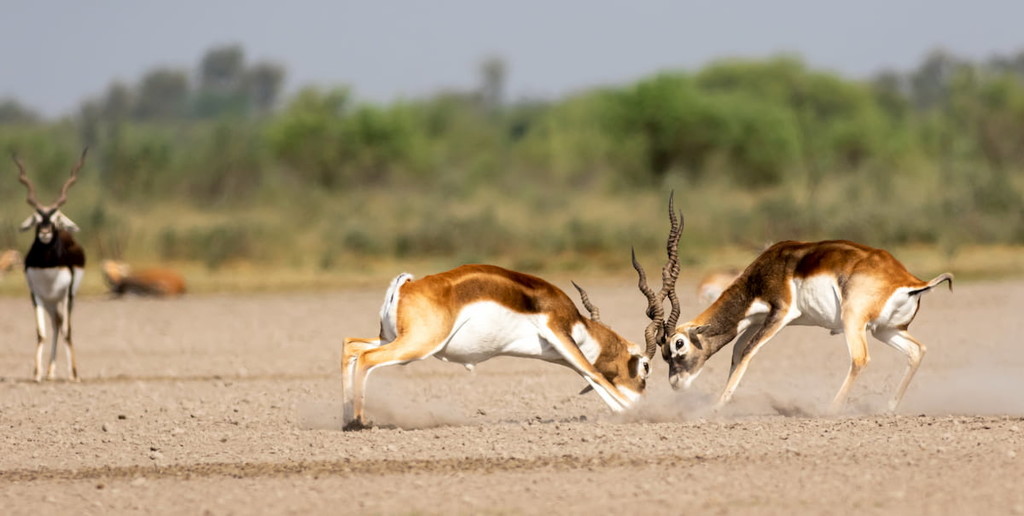
Closer inland, near the Gulf of Khambhat, Blackbuck National Park becomes more representative of the local wildlife, without lions but with plenty of various wild cats, foxes, hyenas, wolves, and herbivores like the signature blackbuck and many of the same as seen in Gir. Sandgrouses, larks, MacQueen’s bustard, lesser florican and various hares and rodents are prominent as well.
These all exist within a flat, dry grassland perfect for antelope herds and currently used to conserve many of the aforementioned species, who are often endangered or at risk. Alongside the grasslands are portions of prosopis-inhabited shrubland, high tidal mudflats, and saline land.
On an even more marine note is the Marine National Park on the Gulf of Kutch, surrounded by over 40 islands and large reef systems with dozens of coral species, sea anemones, jellyfish, crustaceans, molluscs, and most forms of sea life imaginable, with the Portuguese man of war, dugong, green sea turtle, and occasional cetaceans some of the possible fauna to be found in the water.
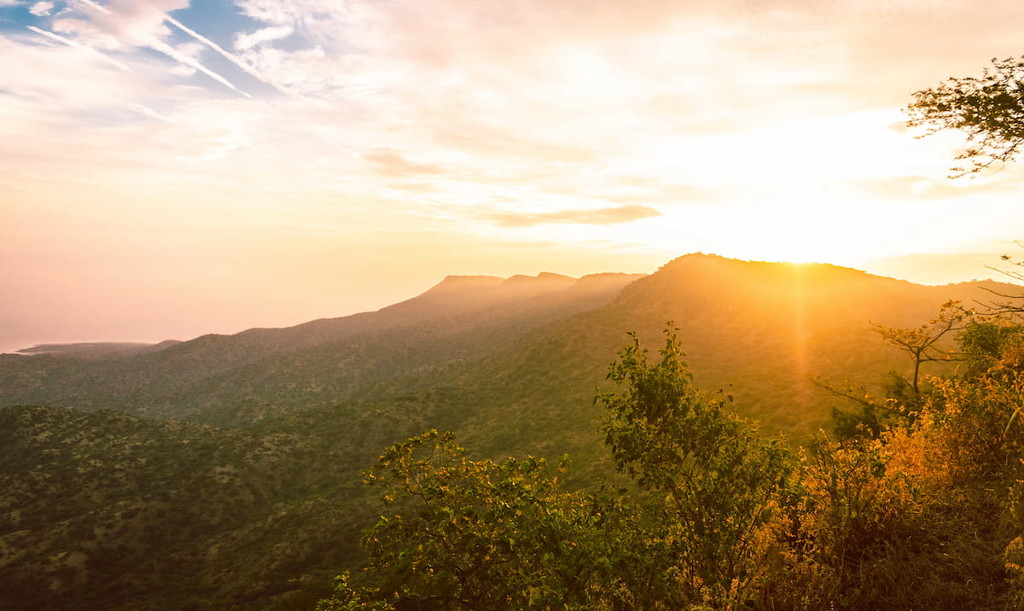
The gulf also attracts many birds, including a massive greater flamingo colony, as well as common wetland and marine birds like egrets, herons, sandpipers, and gulls. Sandy beaches, mangrove swamps, estuaries, sea grasses, and mudflats help create this vibrant community of animal life.
Vansda National Park represents something entirely new, away from the peninsulas near the southern border of Gujarat. Here, thick deciduous woodlands of teak, arjuna, bamboo, and East Indian ebony among others make up the plant landscape, epitomizing the heavily forest Dang district as a whole.
Mammals large and small, from Indian leopards, antelopes, and hyenas to civets, porcupines, and flying squirrels live beside Russell’s vipers, cobras, and kraits. Like other parts of Gujarat, many bird species inhabit the forests, like the common grey hornbill or Malabar trogon. It is also home to all sorts of insects and arachnids, including the largest spider species in Gujarat, the giant wood spider.
The significance of the Gujarat region goes back thousands of years as a central settlement location for the Indus Valley Civilization, and thus boasts remnants of Indus Valley cities that have become major archaeological sites.
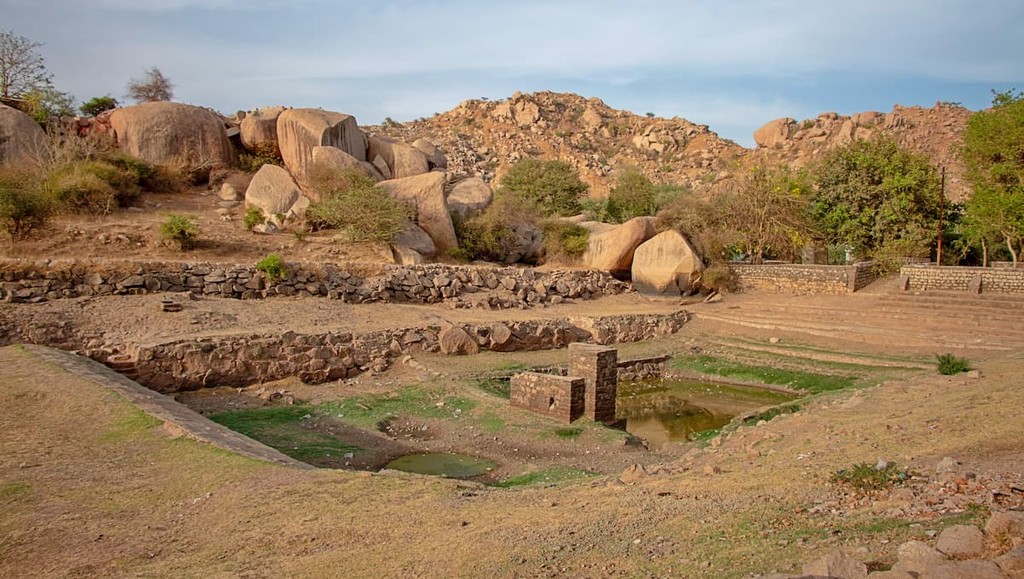
During and after the Indus Valley Civilization, Gujarat became a major commercial and trading hub, trading with civilizations as far as Egypt and Sumer in the beginning of the first millennium BC. The region was known by the ancient Greeks, from whom we have the oldest document describing Gujarat’s maritime affairs.
From the first millennium onward came a revolving door of states and dynasties vying for power in the subcontinent, typically either Hindu or Buddhist, such as the Mauryan Dynasty from around 322-185 BC to the Gurjara-Pratiharas from the 8th to 11th century AD.
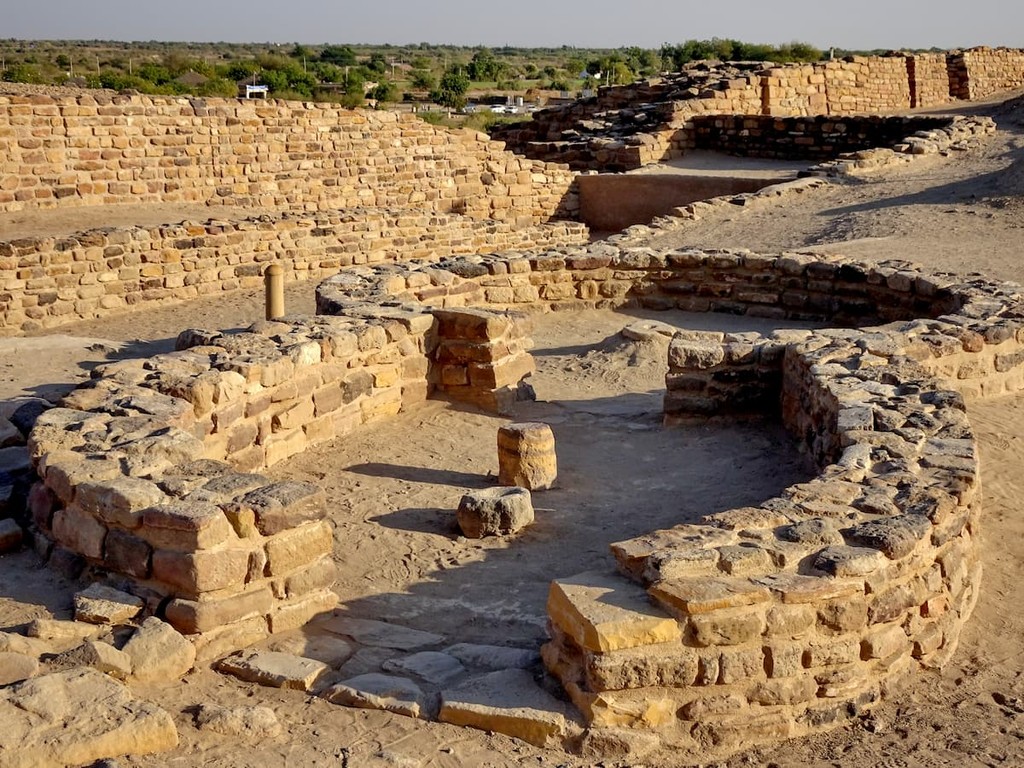
Some of these kingdoms only conquered part of what would become the state of Gujarat. The Chalukya dynasty, from the mid-6th to mid-8th century AD, and the Rashtrakutas succeeding them until the 10th century AD, stretched only as far as southern Gujarat, not reaching the Kiathawar or Kutch.
The Western Satraps, Satavahana dynasty, Gupta Empire, Pala Empire, Gurjara-Pratihara Empire, Maitrakas, and Chaulukyas were other notable states who controlled parts of Gujarat at one point or another.
Gujarat maintained its status as an important Indian Ocean trading port throughout these centuries, and around the 11th century AD some of the largest cities in India were located in the area, like the 100,000-people strong city of Anhilwara (now known as Patan).
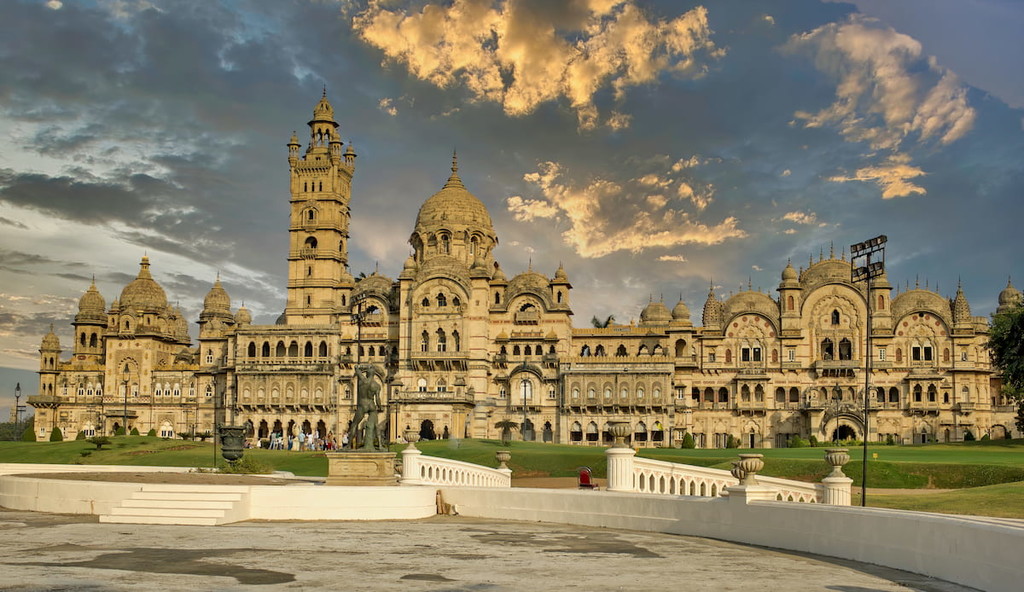
The timeline of mostly Buddhist or Hindu rule ended in the 13th century AD with the defeat of the Vaghela dynasty by the Khalji Dynasty, who then absorbed Gujarat into the Muslim Delhi Sultanate. Under the Delhi Sultanate, the Gulf of Khambhat became the major trading port of Gujarat, where much trade with Egypt was commenced.
In the 15th century, Gujarat became the Gujarat Sultanate, a likewise Muslim kingdom. This was able to form due to the Delhi Sultanate’s weakness after the sacking of Delhi by Timur, during which the governor of Gujarat saw a chance to establish Gujarat as independent. Ahmedabad became the capital, named after the governor’s son, Sultan Ahmed Shah.
Gujarat maintained its independence until being conquered by the Mughals in 1572, which made the port of Surat Gujarat’s major port. People of various cultures came to and had come to Gujarat around this time, in part due to a seeming religious renaissance that drew Zoroastrians, Sufis, and Shiites and many others to its cities, and in part a general migration of peoples into the area, as Gujarat gained a reputation for its seemingly vast wealth.
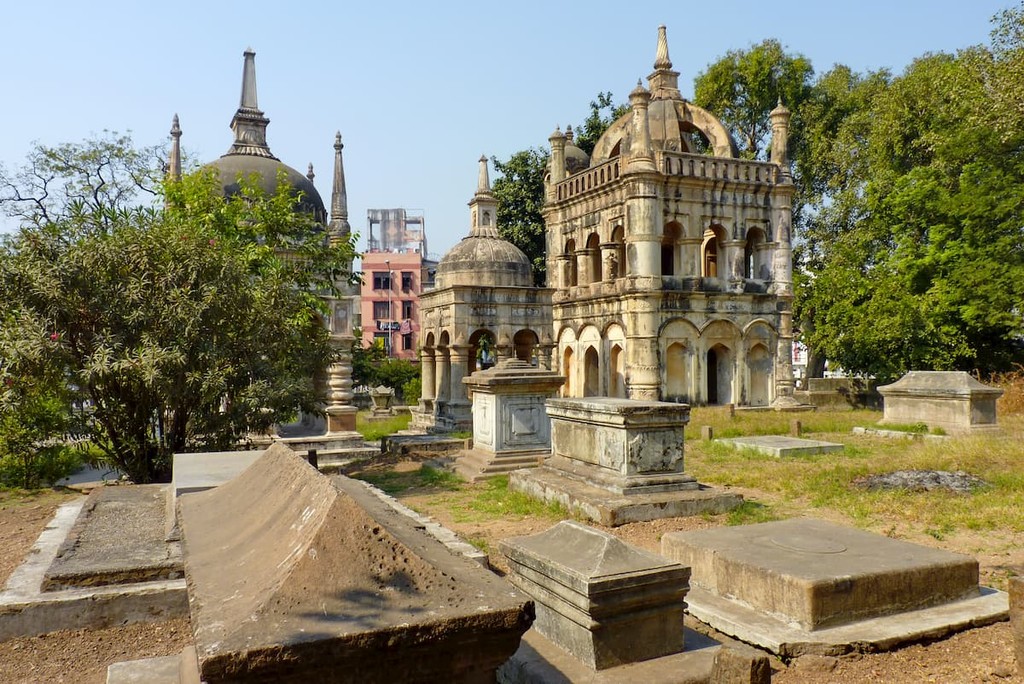
The Mughal Empire faced a similarly transient fate as the Hindu Maratha Empire began to take hold of Gujarat in the late 1600s, though this was met with resistance by many locals and anticipation by the freshly-arrived European nations, the first of whom were the Portuguese, who made an impact on Gujarat and surrounding areas.
It was the British East India Company, however, that sought to dethrone the Marathas, and were largely successful with the aftermath of the Second Anglo-Maratha War in 1802-1803. Just a decade later, an epidemic would kill large swaths of Gujarat’s population. Gujarat fell under the rule of British India’s Bombay Presidency, some parts under the direct governance of local British authorities.
With Indian independence in 1947, Gujarat’s many princely states were concentrated into three main districts, which would change over time in due to political pressure, with the official state of Gujarat formed in 1960.
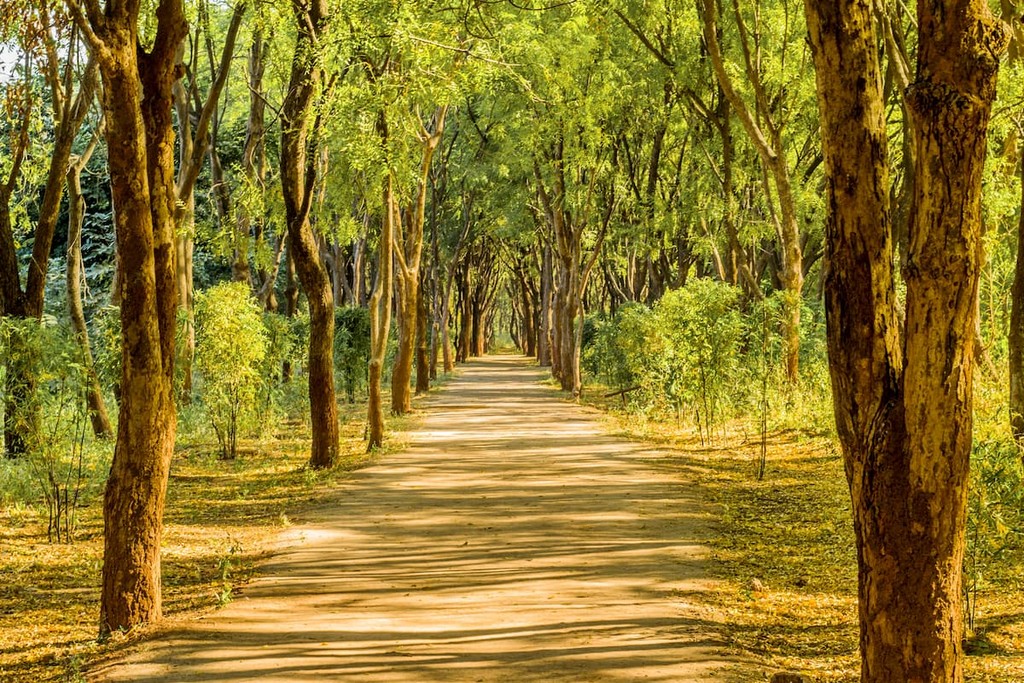
There are a plethora of hiking and trekking experiences to be had in Gujarat, from mountains of great cultural and religious significance to parks and sanctuaries of great natural beauty. One of the most popular hiking locations are the Girnar Hills of Mount Girnar, with 10,000 steps leading to the top and hundreds of temples surrounding its summits of both Hindu and Jain significance.
Pilgrimages abound in Gujarat, and a similar situation can be seen in the climbing of Shatrunjaya hills, important Jain sites studded with almost 900 Jain temples. The Palitana pilgrimage requires over 3,500 steps in ascent, a climb that can take around two hours for 3.5km/2.2mi. Similarly, the pilgrimage site of Datar Hill, near the Girnar Hills, offers a trail of around 3,000 steps to reach the shrine at its summit.
The Shoolpaneshwar Wildlife Sanctuary houses the incredibly photogenic Zarwani Falls, which can be accessed through one of the sanctuary’s many hiking trails. The serenity and beauty of the location makes it ideal for relaxing, birdwatching, and enjoying the stunning views. Zarwani is but one of several waterfalls in the driving vicinity of Ahmedabad, alongside the Zanzari and Hathni Mata.
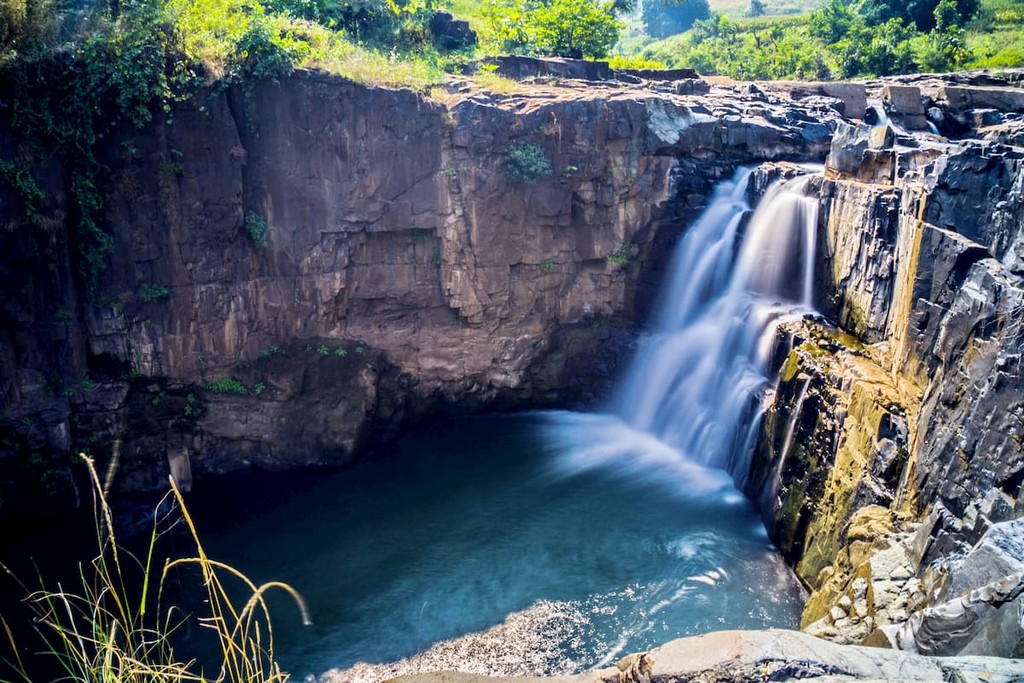
Within this vicinity is also the Polo Forest, where an ancient city and ancient temples, rivers, and vast greenery can be explored. It is generally suggested to hire a guide for one’s trek for a more accessible experience in the jungle.
Other notable locations for hiking and trekking include:
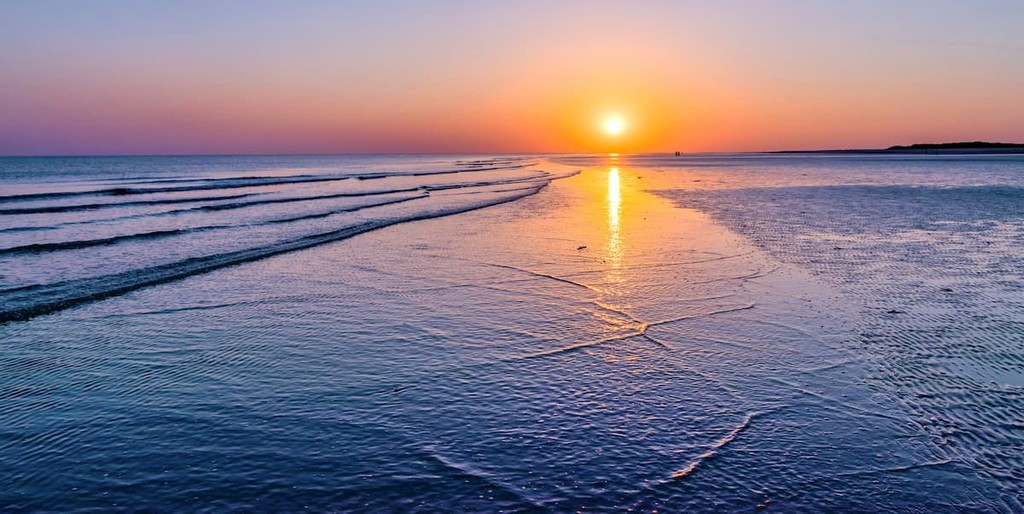
And of course, the national parks of Gujarat are some of the most prominent destinations for hikers and tourists. While some are most commonly explored in vehicle safaris, they typically offer on-foot trails as well. This applies to Vansda National Park, where foot trails, while available, should be embarked upon with proper safety precautions due to the presence of certain snakes and spiders.
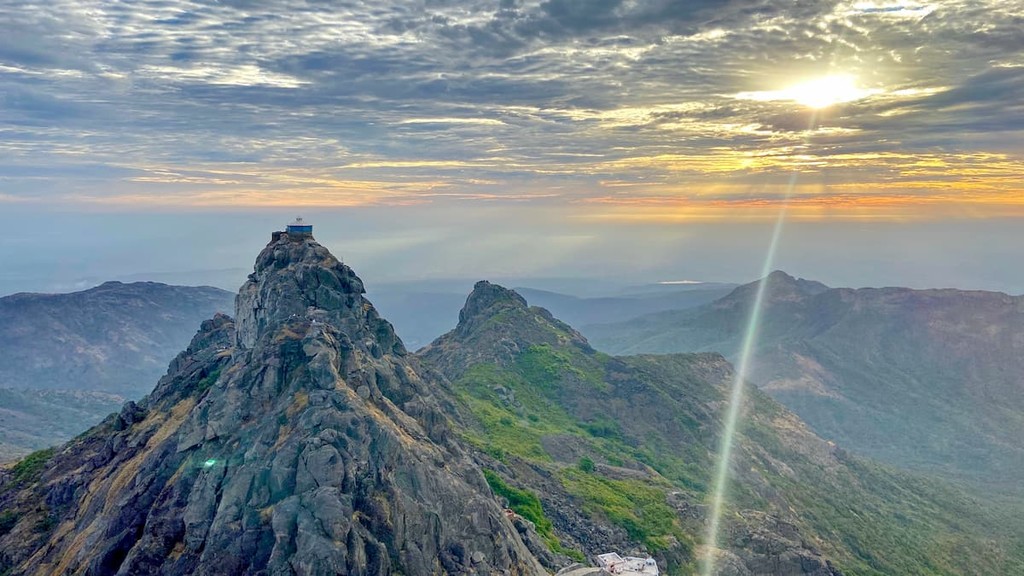
Gir National Park requires an online permit for vehicles, as well as fees for a mandatory guide and wildlife photography, which is common among many Gujarat parks and sanctuaries and should always be checked in advance. It seems unclear as to what extent Gir can be travelled on foot, as jeep safaris seem to be the main form of travel within the park.
Blackbuck National Park is another popular location for observing local flora and fauna, especially birds, known for its great birdwatching opportunities. Likewise, it is unclear how much of the park is restricted to vehicle travel, though there do seem to be some options for those who prefer to explore on foot.
With over twenty wildlife sanctuaries in Gujarat, there are many other options for exploring and hiking through the state’s diverse and wonderful ecosystems. Some notable ones include:
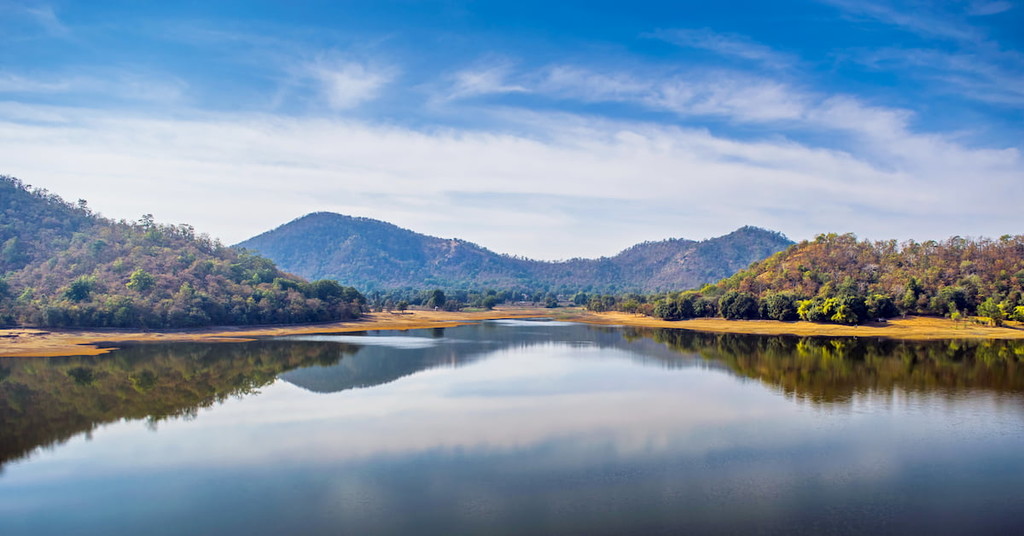
There is no shortage of cities in Gujarat, where urban areas ranging from thousands to millions of people provide opportunities for lodging, transportation, and tourism throughout the major regions of the state.
Ahmedabad is one option for the central, inland region, alongside neighboring Gandhinagar; Surat for the south; Rajkot for Kathiawar; and though they are not listed here, Bhuj or Gandhidham for the Kutch district, although there are many other cities around Gujarat that may also deserve consideration.
Though it is no longer the capital of Gujarat, as its largest city, with over 5,500,000 people, Ahmedabad is a fast-growing city with growing commerce and tourism industries. Centuries-old mosques, palaces, and temples sit alongside a modern metropolis, with a distinct modernist touch to many of its institutions, designed by the likes of Louis Kahn, Le Corbusier, or Frank Lloyd Wright.
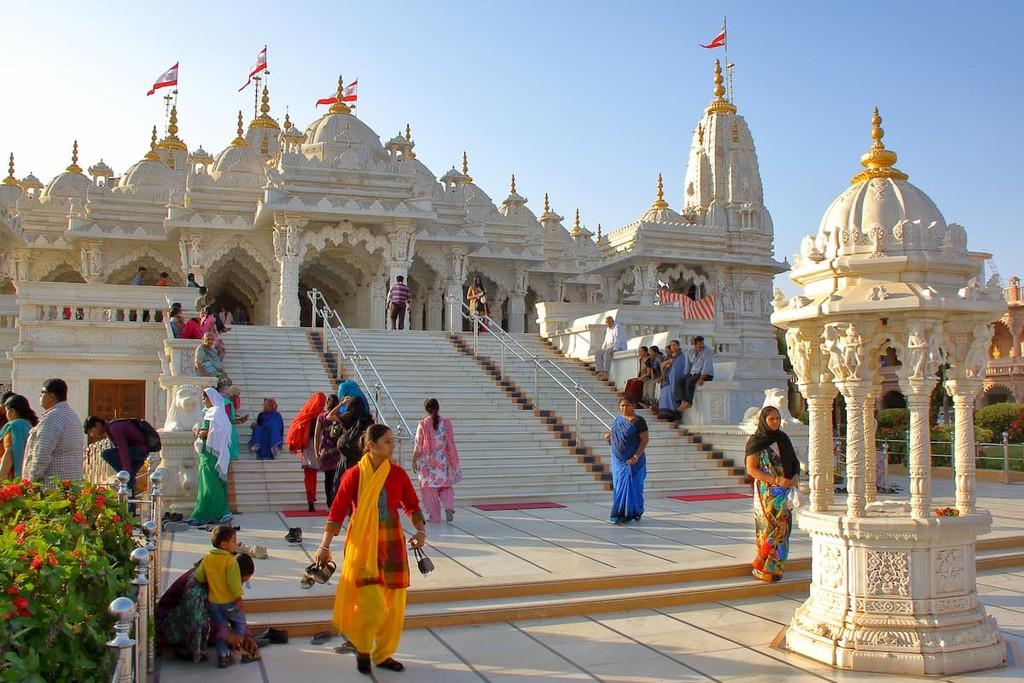
Ahmedabad is home to natural sights, like the lush Law Garden and its famous adjoining market, and even artificial natural sights, like the man made Kankaria Lake. It is also a center of Gujarati culture, and a prime location of many major cultural festivals and celebrations, like Uttarayan, Navratri, and Diwali. The city has a large restaurant and hotel industry, lively city squares like Manek Chowk, and many museums and cultural institutions.
Air pollution has been an issue in Ahmedabad, but recent efforts have been trying to mitigate the problem through air quality monitoring and various regulations in regards to transportation, construction, and industrial activity.
For transportation, Ahmedabad’s main terminus is the Ahmedabad railway station, which connects to other important places in Gujarat and India as a whole, while the city is also near Gujarat’s biggest airport, the Sardar Vallabhbhai Patel International Airport. Inside the city, there is a bus rapid transit system as well as a metro system for both Ahmedabad and nearby Gandhinagar currently under construction.
Another massive metropolis, with over 6,000,000 people, Surat is regarded as one of the cleanest and fastest-growing cities in India, located on the coast of southern Gujarat. The city has a domestic airport that connects to other major cities of India, as well as a well-connected railway, a bus rapid transit system, and general availability of local taxis.
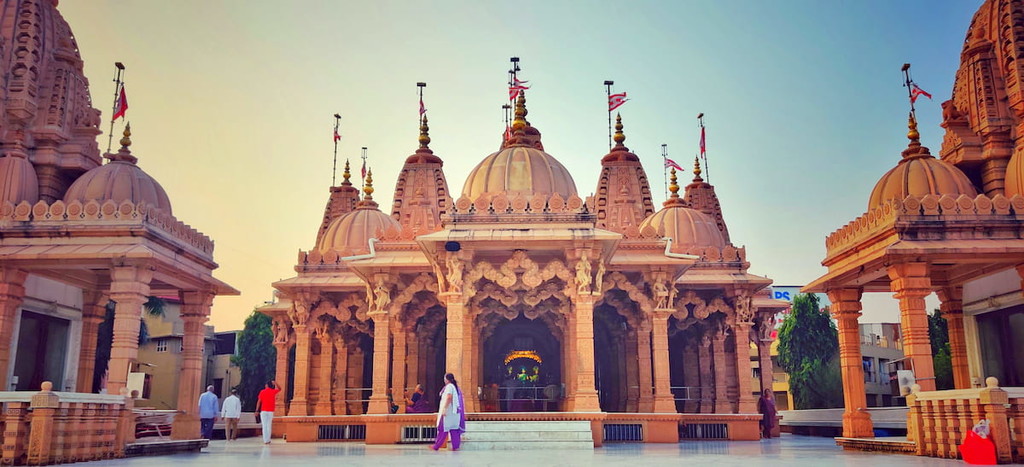
The history of Surat can be well observed in Heritage Square, with Mughal and British influence apparent in its structures. The complex has notable features like Surat Castle and nearby Victoria Garden, Anglican Church and nearby Kasturba Garden, and the almost two centuries old Andrews Library.
The Dutch-Armenian Cemetery, Sardar Patel Museum, Narmad House, and Science Centre are other significant hubs of culture and/or education in the city, among many mosques and temples. The nearby beaches, zoological gardens and aquariums, and wildlife sanctuaries provide many opportunities around city borders as well.
Squarely on the peninsula of Kathiawar, Rajkot, like Surat, is another city known for its cleanliness and growth in recent times. Rajkot is a vastly multicultural city with a rich history and endless landmarks to explore, including Mohandas Gandhi’s childhood home, the Jubilee Garden, the Watson Museum, and an abundance of temples.
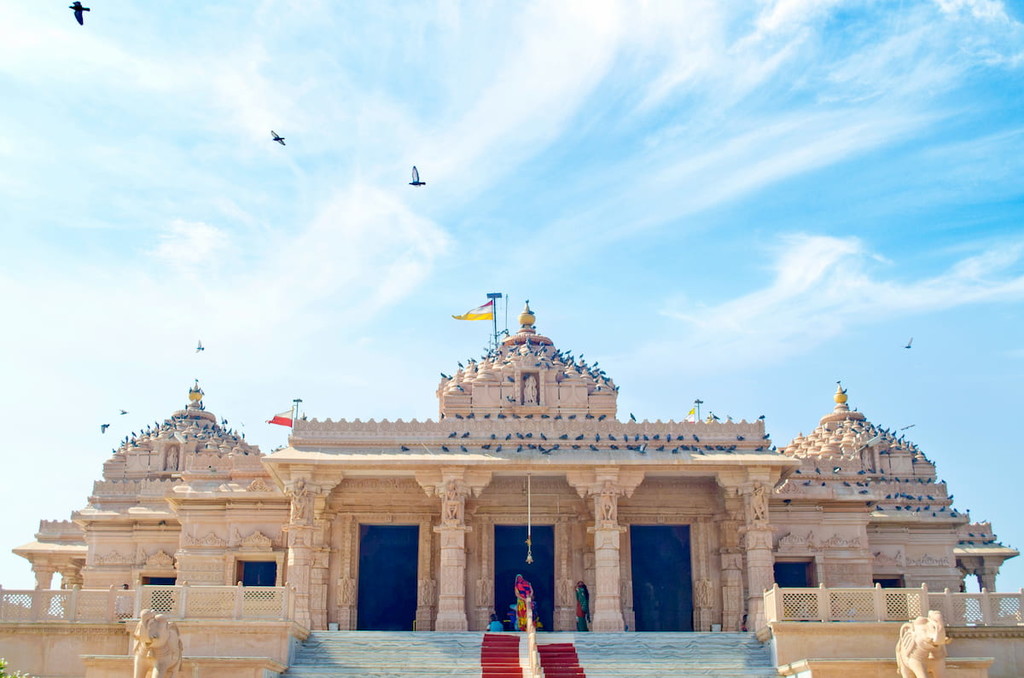
Popular in Rajkot is the Garba dance, performed during the Navratri festival, as well as cricket, jewellery and other handicrafts, and the local music and performing arts scenes.
Buses run frequently to the city through the Gujarat State Highway system, with buses used to get around within the city as well. Rajkot also has the Rajkot Junction railway station, which provides services to other important Indian cities. Flight is mainly possible through Rajkot Airport, with daily flights available from Mumbai.
Explore Gujarat with the PeakVisor 3D Map and identify its summits.








